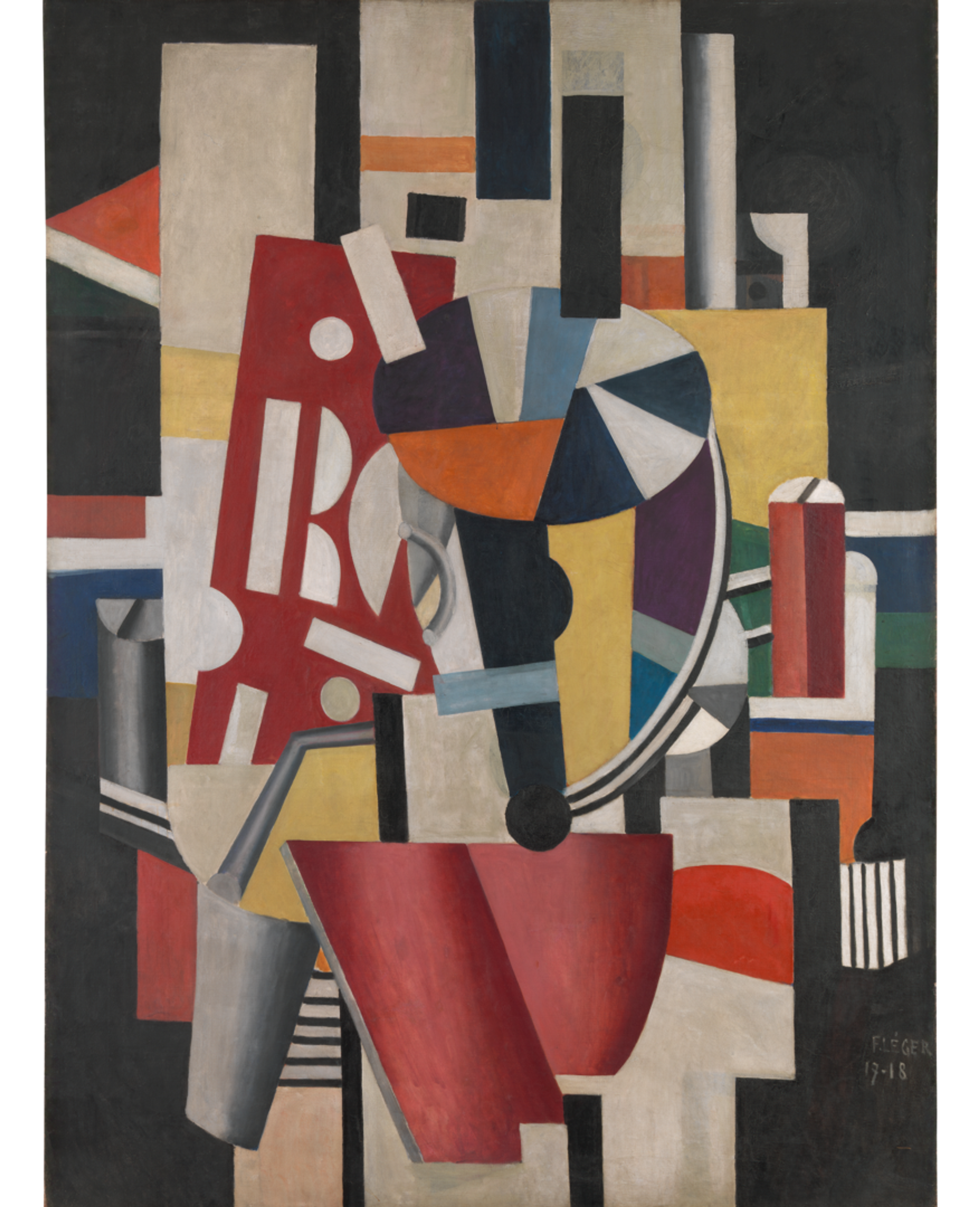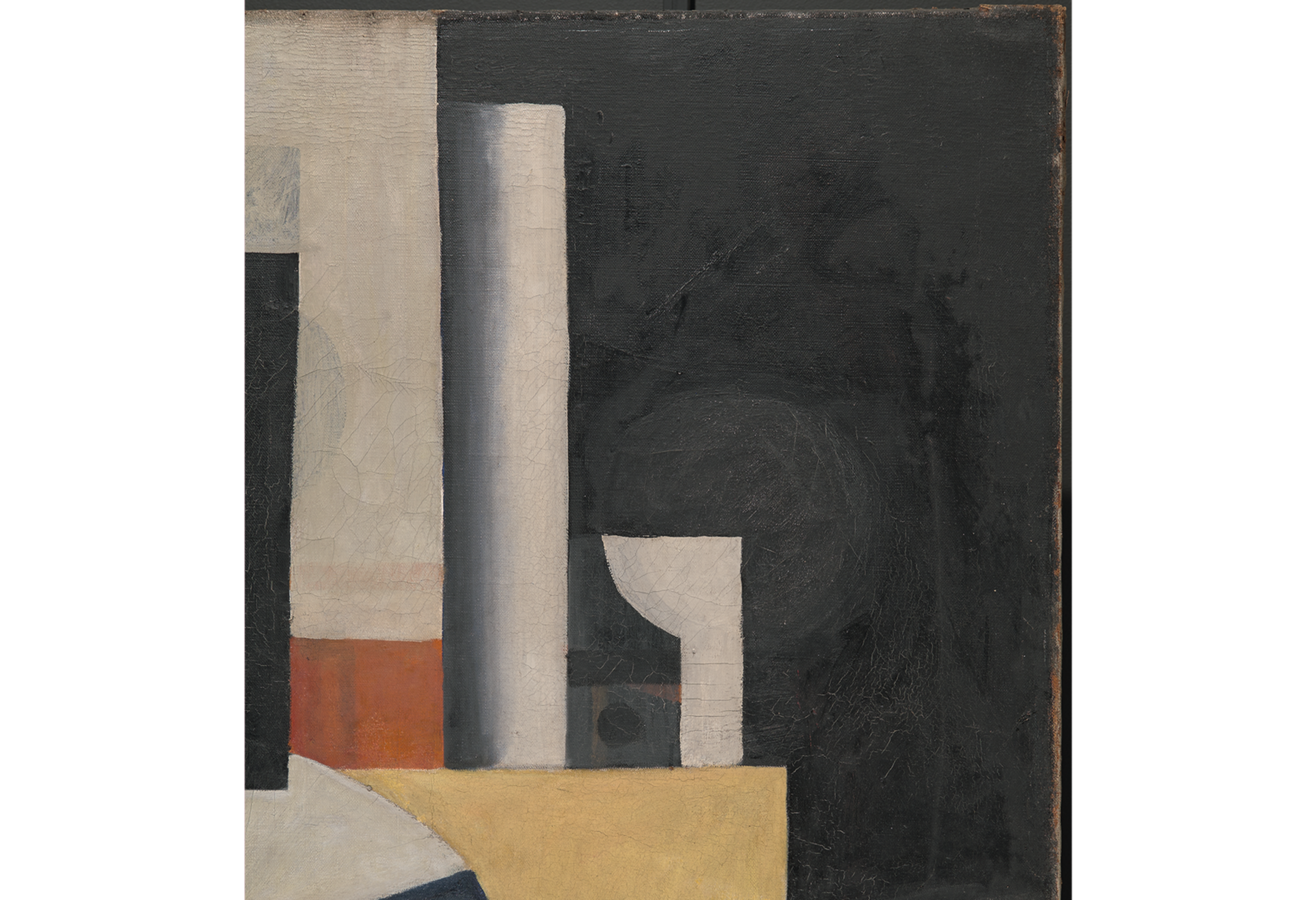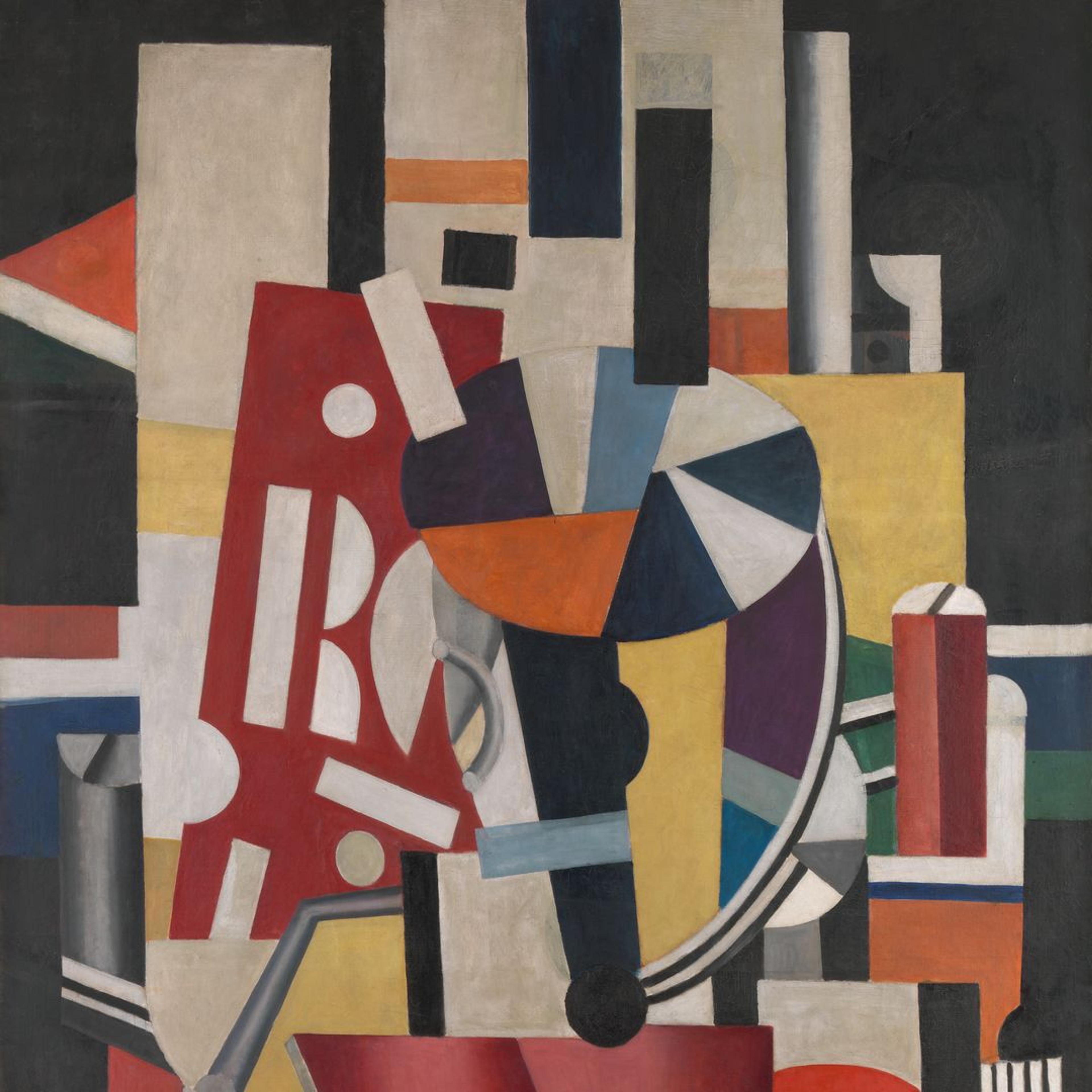
Fernand Léger (1881–1955), Composition (The Typographer), 1918–19. Oil on canvas, 98 1/4 x 72 1/4 in. (249.6 x 183.5 cm). Promised Gift from the Leonard A. Lauder Cubist Collection © 2016 Artists Rights Society (ARS), New York / ADAGP, Paris
Fernand Léger reworked nearly every shape in Composition (The Typographer). Over the past century, the paint medium of the work has become more transparent, revealing features in the underlayer and exposing many of Léger's alterations. Also, some hues might have faded over time, thus shifting their tonality. For example, in the background at upper right (FIG. 1), a pronounced difference in texture underneath the paint layer (pentiment) indicates that Léger first painted a large white sphere on a stem, but later modified it by overpainting part of it with black. The much thicker white paint is visible under the thin black paint, resulting in a ghosted image that shows through the surface. The black paint Léger used to revise this area is more medium-rich than the one he had originally applied to the background; therefore, it appears glossier and more saturated. The juxtaposition of the two black paints creates a mottled effect that has become more pronounced over time. Similar changes can clearly be seen at the center of the composition where the light blue paint of the rectangle has become more transparent over time (FIG. 2).

FIG. 1. Detail, upper right corner, of Composition (The Typographer).

FIG. 2. Detail, center, of Composition (The Typographer).
For more information, see:
Green, Christopher. "Fernand Léger’s Multiplicative Vision for a 'Postwar Generation.'" In Cubism: The Leonard A. Lauder Collection (MMA, 2014), pp. 202–206, 318–319.
